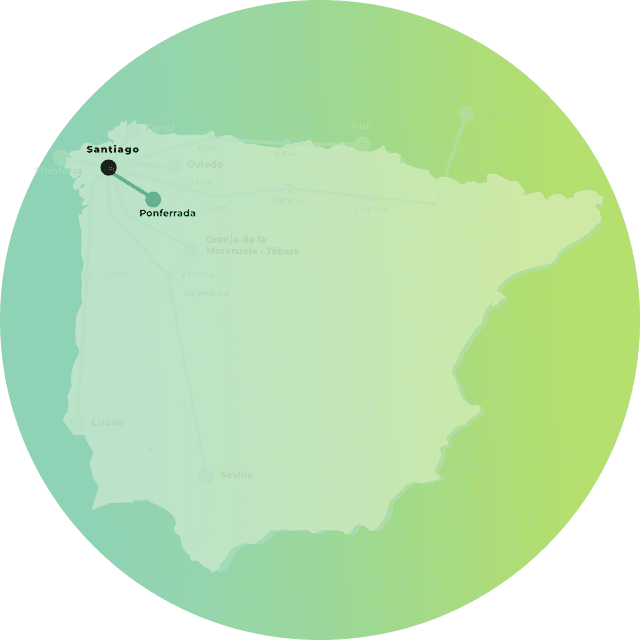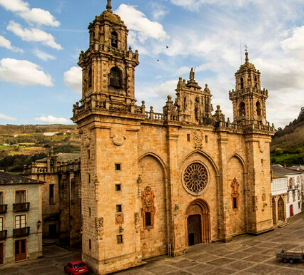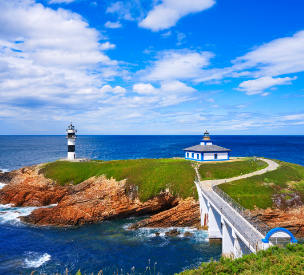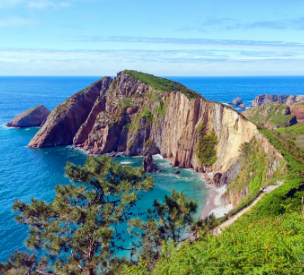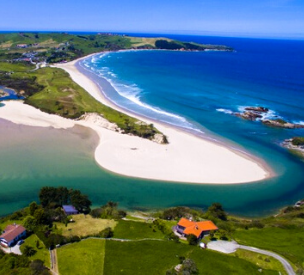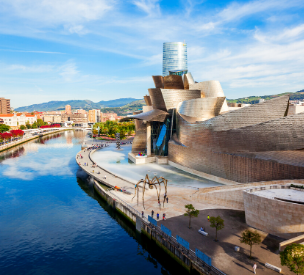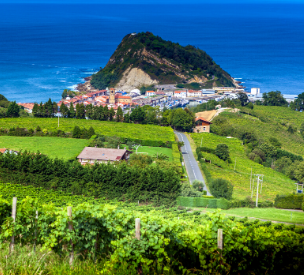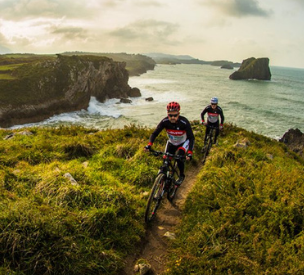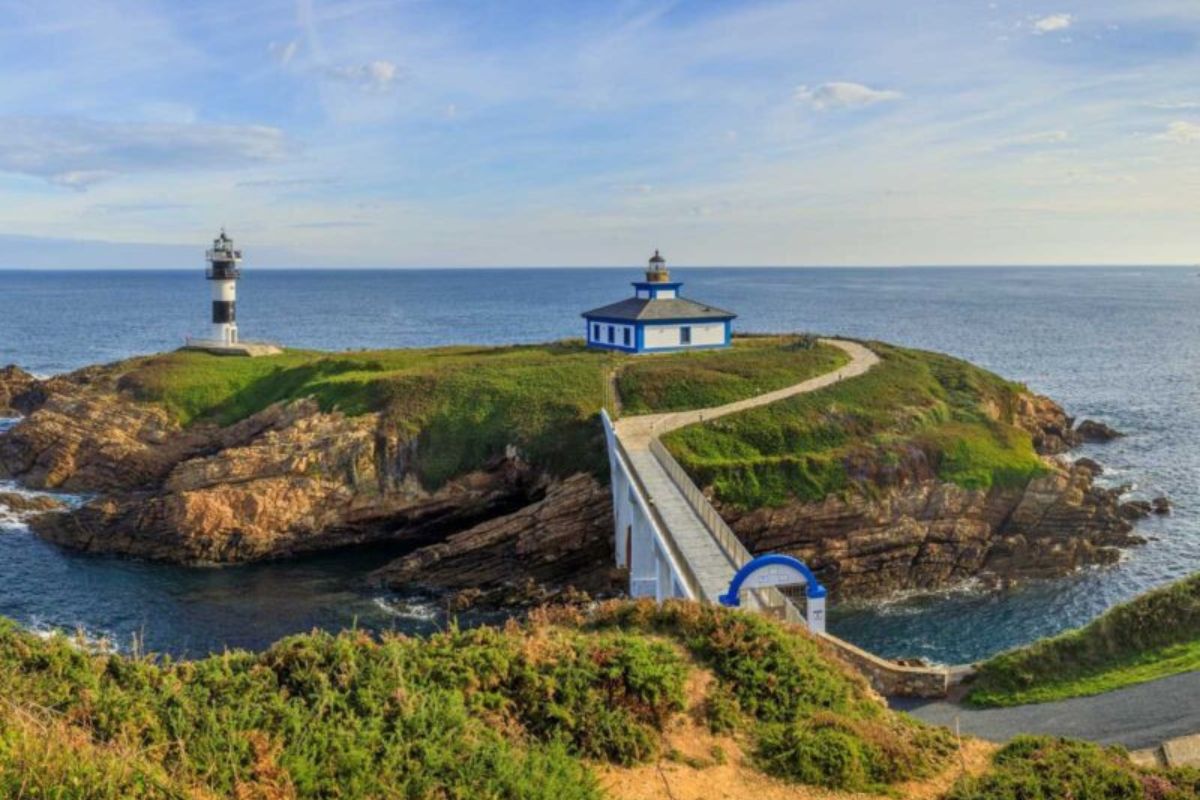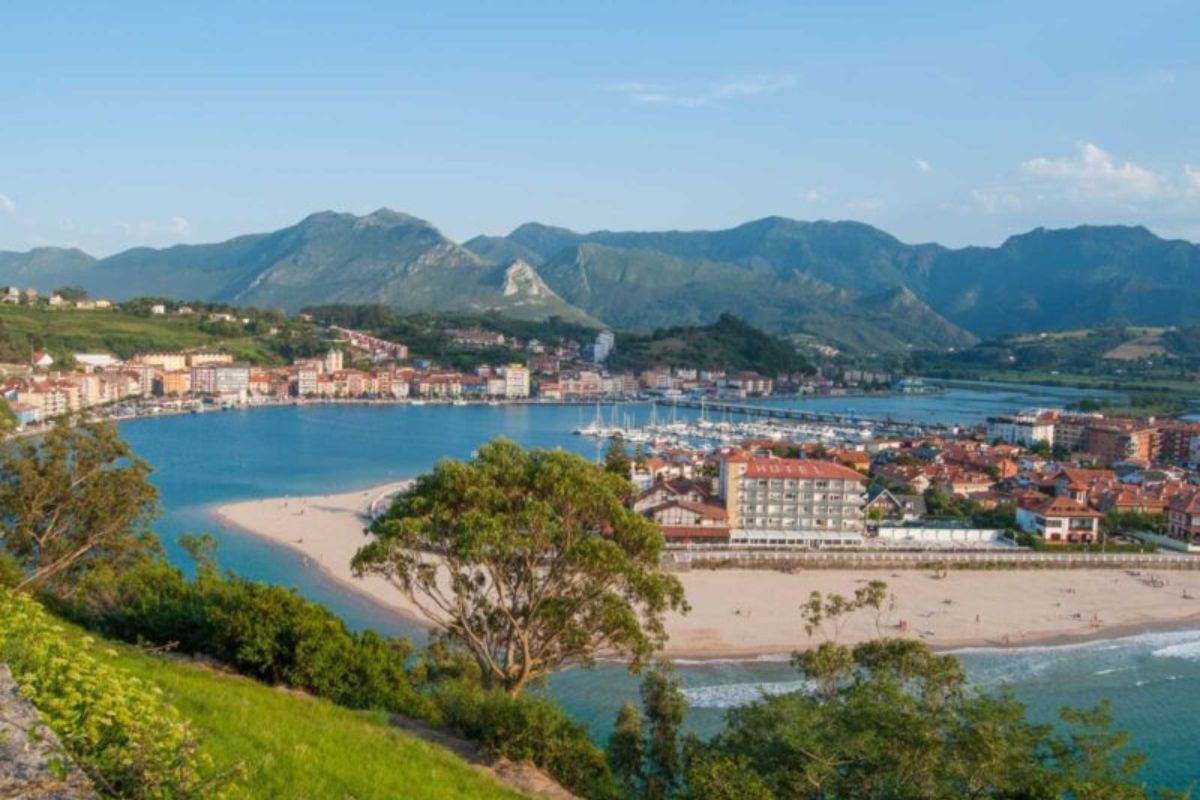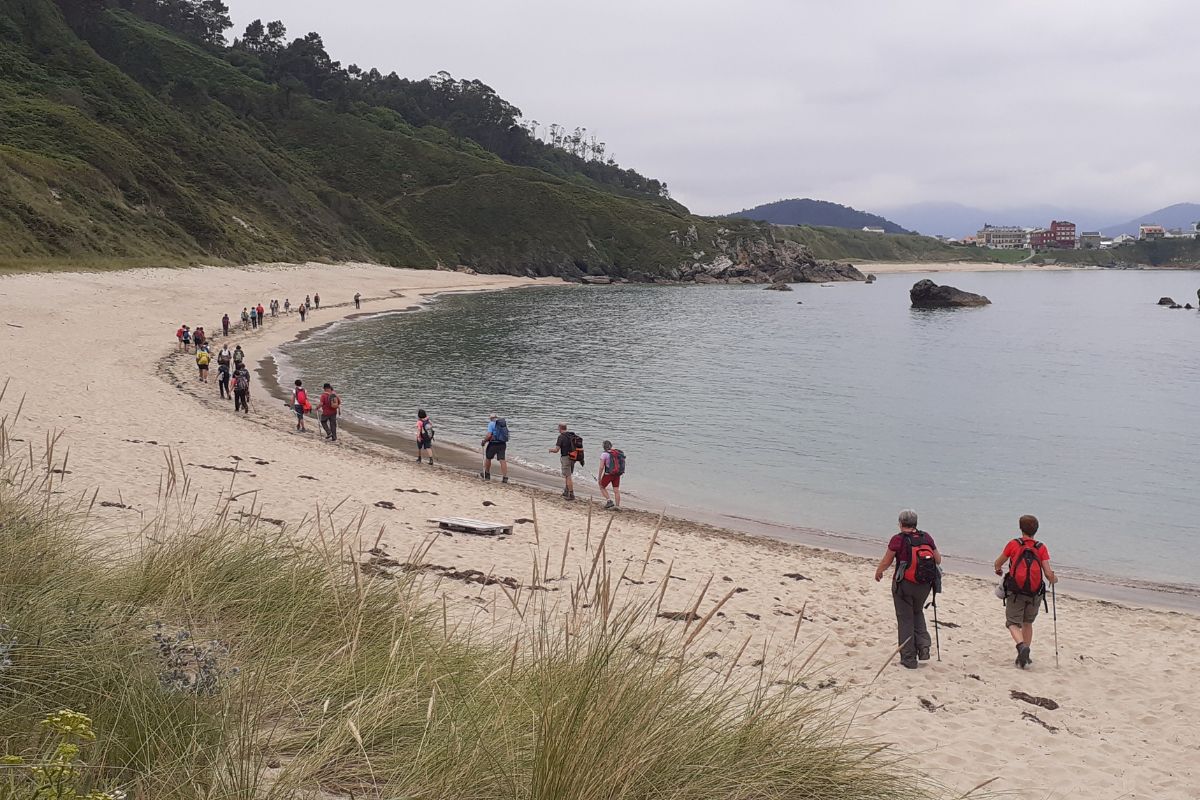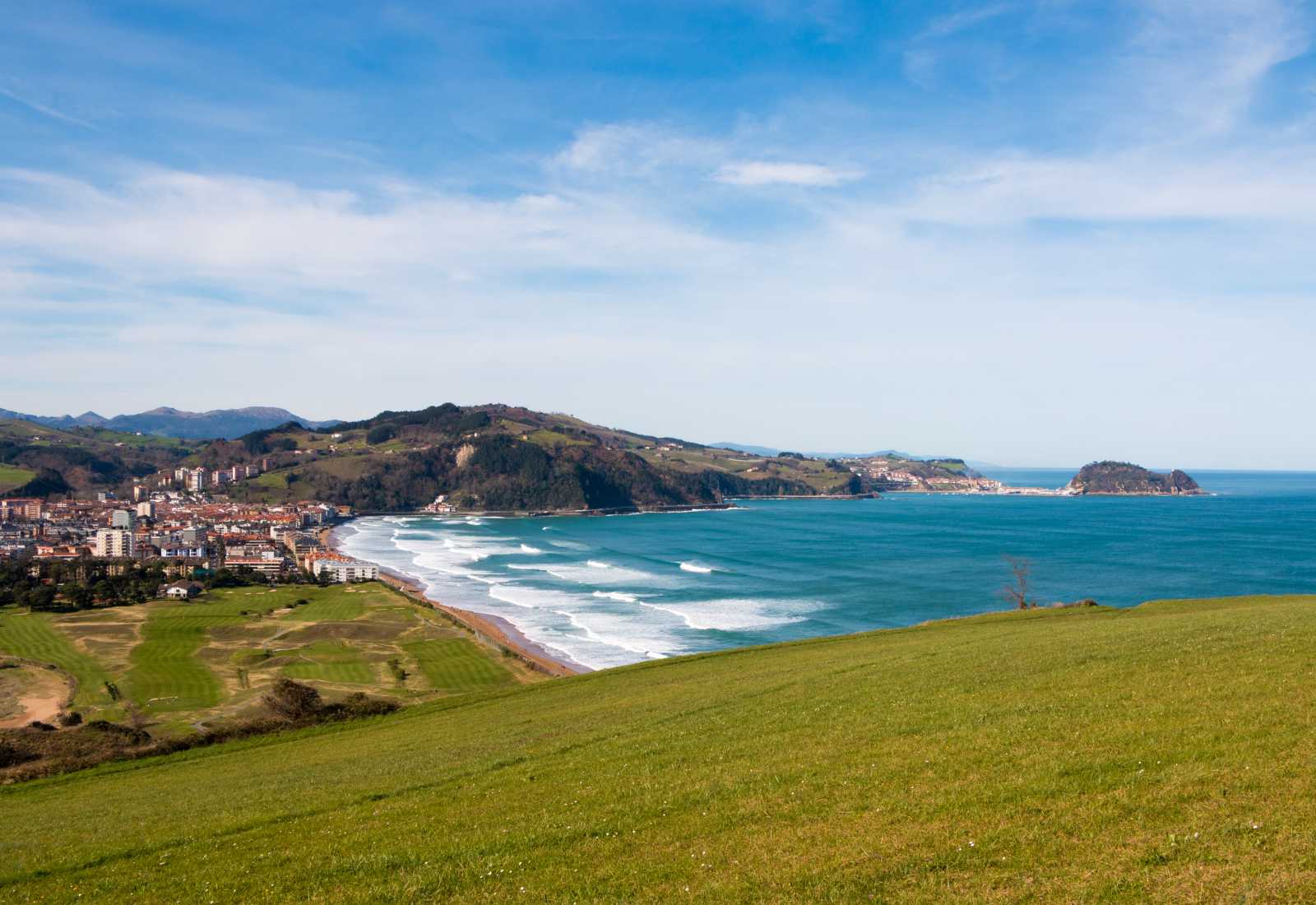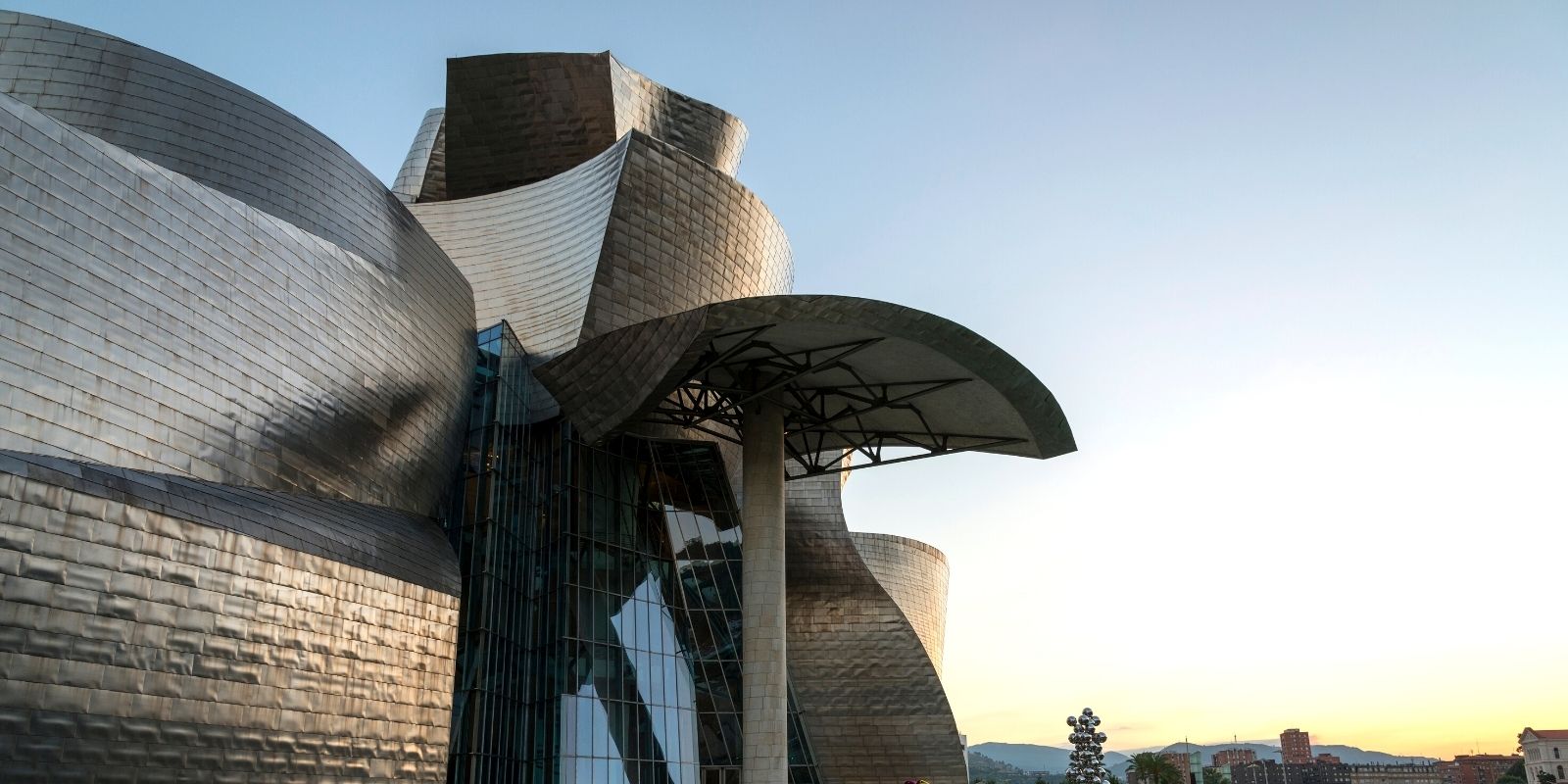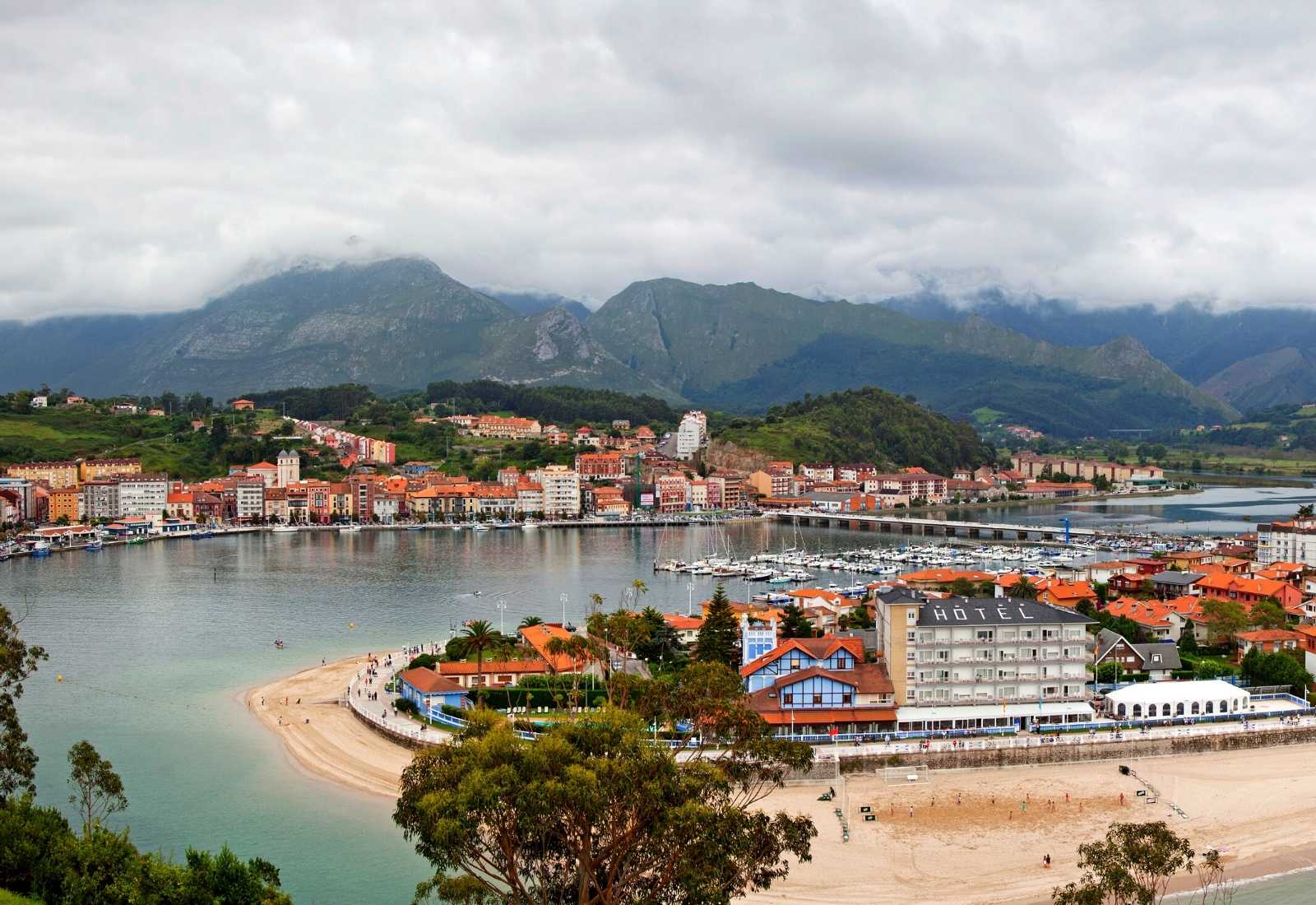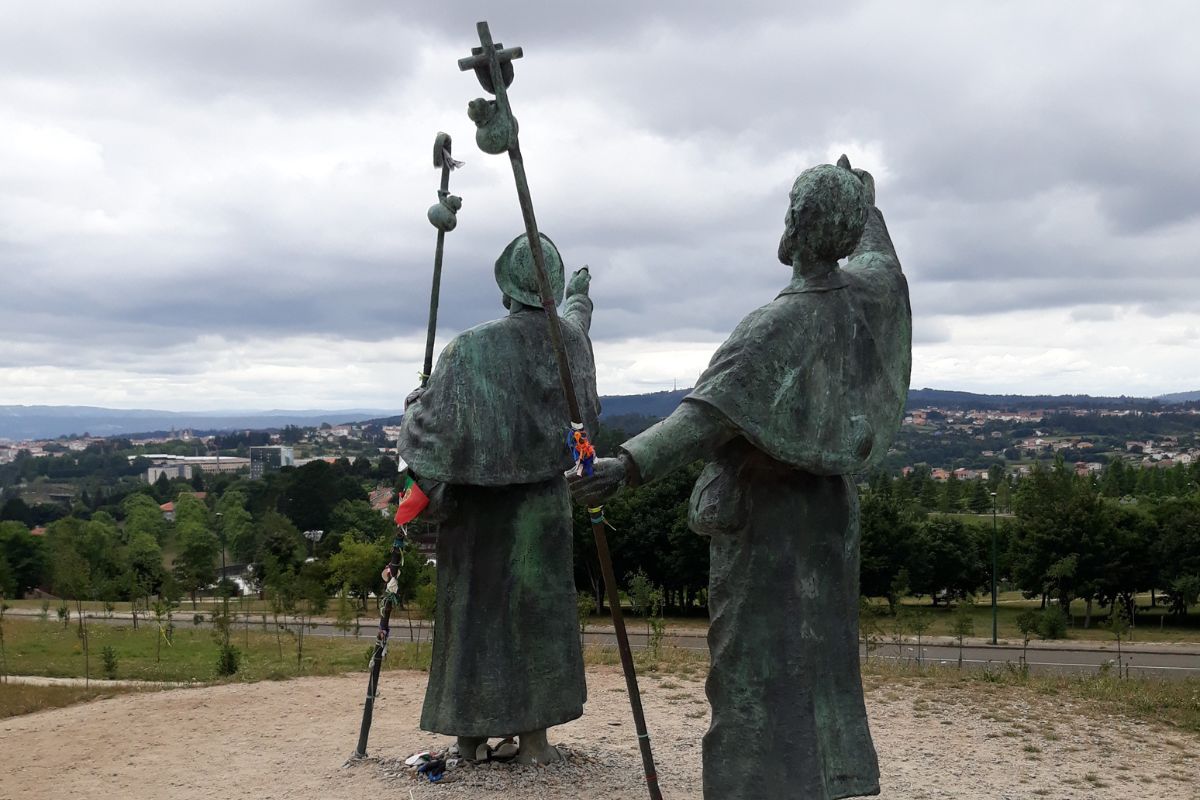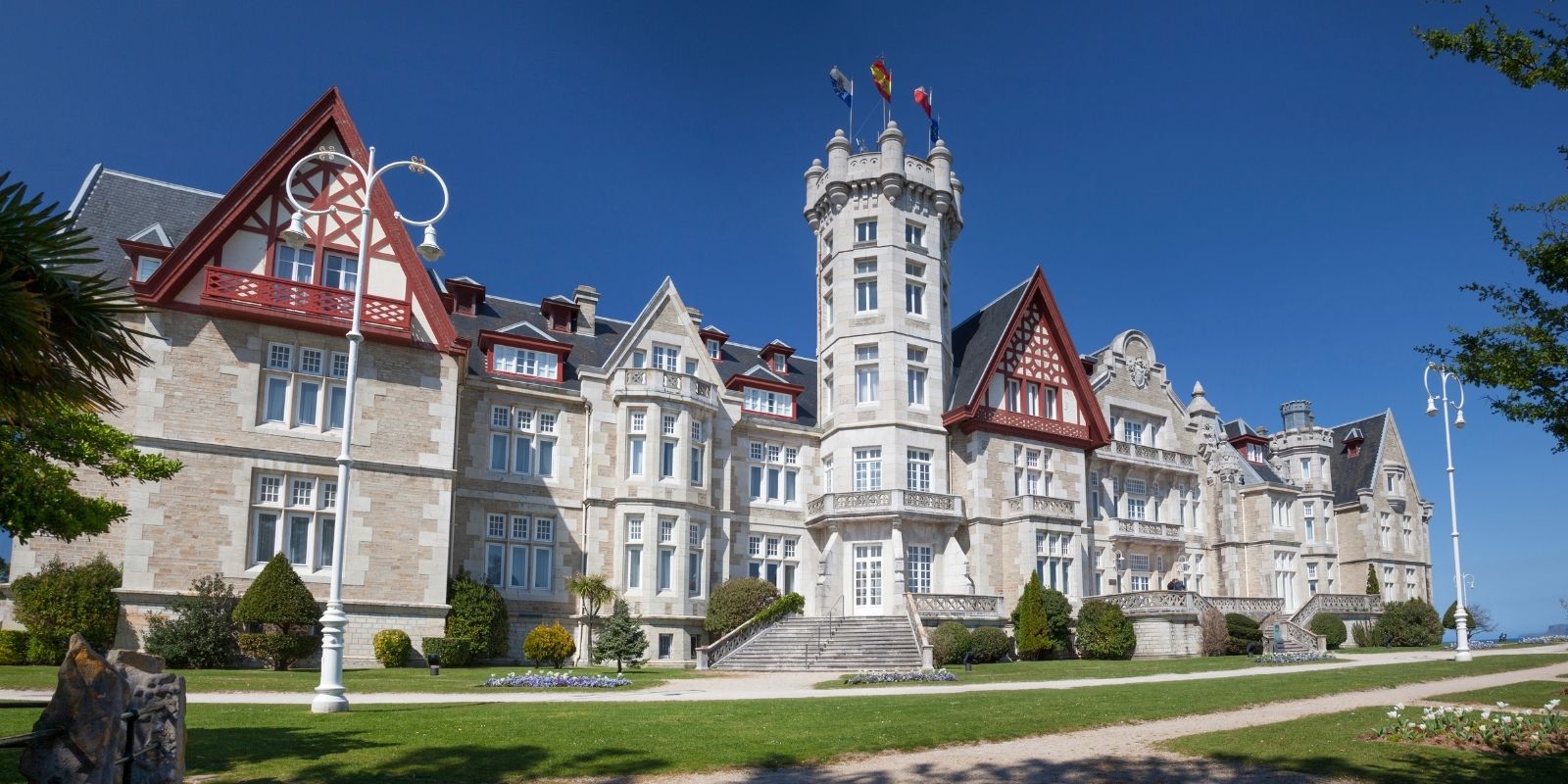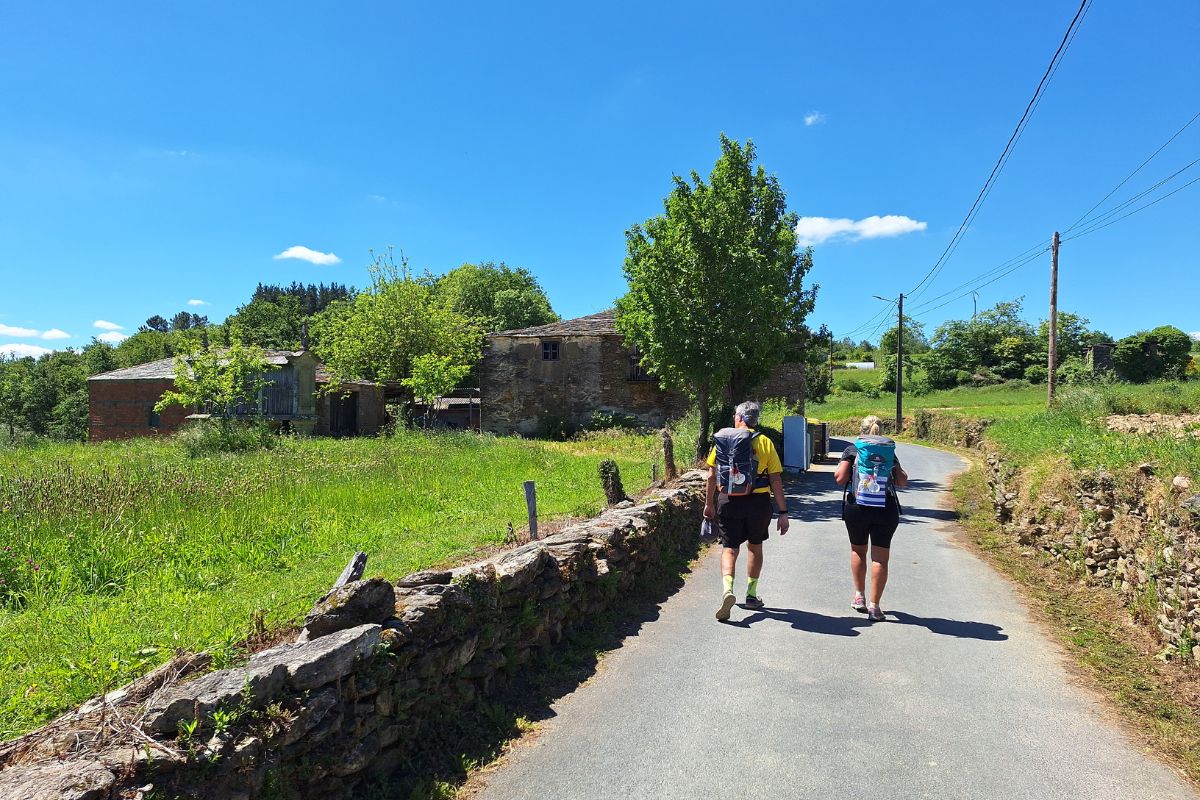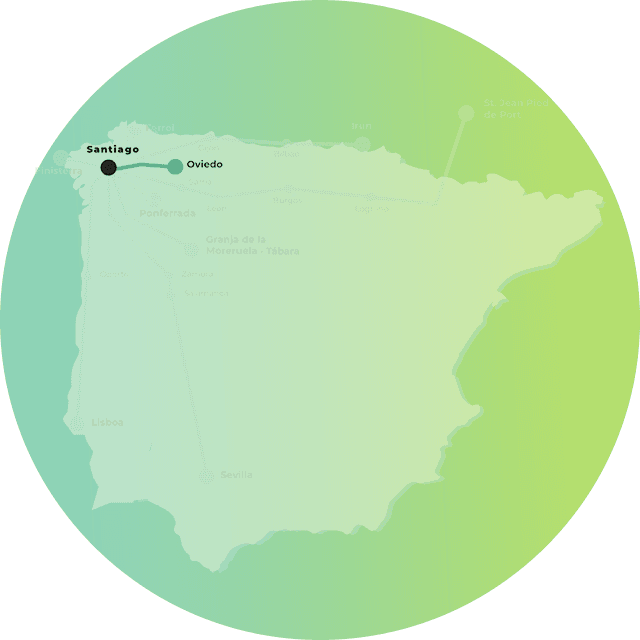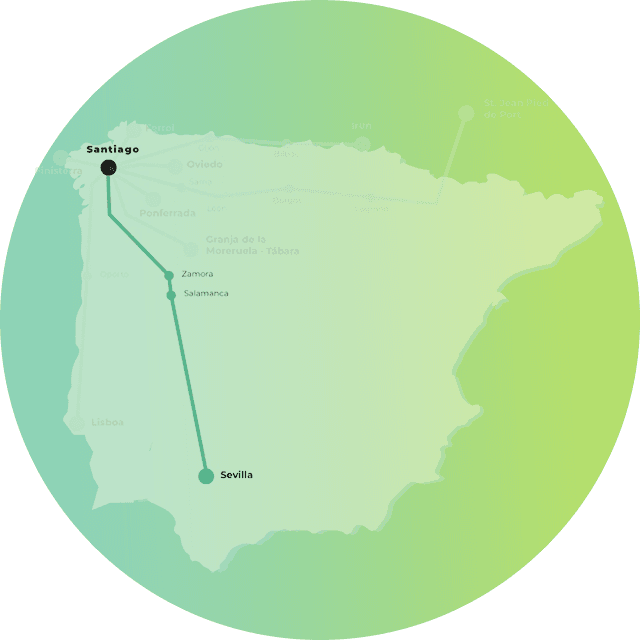The Northern Way of the Camino de Santiago
An exciting adventure along the Cantabrian coast.
The second longest route of the Camino de Santiago, only behind the Vía de la Plata. It starts in the Basque city of Irún and crosses the autonomous communities of Euskadi, Cantabria, and Asturias before entering the province of Lugo through the town of Ribadeo.
The Camino de Santiago del Norte is a fantastic route that will reveal some of the most beautiful beaches in the north, spectacular cliffs, idyllic rural areas, and cities where you can taste the best gastronomy in the country.
Services we offer on the Northern Way
Included in all our routes
- Accommodation booking selecting the best lodgings according to your budget.
- Luggage transport between stages.
- Practical information about the Camino in a detailed guide.
- Phone assistance en route we’re by your side for any questions or incidents.
- Travel insurance with broad coverage.
On group tours
- Accompanying guides professional support throughout the Camino.
- Support vehicle available during the stages.
Optional services
- Meals and diets: option to add breakfasts or half board.
- Private transfers to/from the point you need.
- Bicycle rental (mountain or electric bikes).
Map of Northern Way of the Camino de Santiago
The map illustrates the complete route of the Camino de Santiago del Norte, which starts in Irún, in the Basque Country, and extends along the northern coast of Spain until it reaches Santiago de Compostela, in Galicia. This historic route, approximately 820 km long, crosses regions such as Cantabria, Asturias, and Galicia, connecting iconic cities and towns like San Sebastián, Bilbao, Santander, Gijón, and Ribadeo.
At the bottom, the altitude profile of the route is shown, highlighting the elevation changes typical of coastal and mountainous areas. Pilgrims encounter challenges such as the cliffs of the Cantabrian coast and the ascents towards the Cantabrian mountain range, which alternate with flatter sections. Each stage offers breathtaking views, a rich cultural heritage, and the hospitality typical of northern Spain, making this route an unforgettable spiritual and physical experience.

Information about the Northern Way of the Camino de Santiago
Why choose the Northern Way of the Camino de Santiago?
All the flavor of the sea and the majesty of the Cantabrian mountains in a single route.
One of the main attractions of this route is its undeniable scenic charm. A journey that takes you by the hand through the impressive landscapes of the Cantabrian Sea coast, offering unforgettable views of its majestic beaches, cliffs, mountains, and rural areas at every step. A path also designed to enjoy the charm of some of the most touristic seaside villages in these communities.
A route that, over the years, has gained more followers and is emerging as a great alternative to the more crowded French or Portuguese Ways. Due to its recent popularization, in recent years, the network of hostels, accommodations, and infrastructure along the route has been strengthened, now more than sufficient to meet the demand of pilgrims walking or cycling the route.
What to see and do on the Northern Way of the Camino de Santiago?
A route that combines heritage, nature, and gastronomy.
Where to start the Northern Way of the Camino de Santiago?
From Irún
The Northern Way officially begins in the Basque Country, specifically in the city of Irún. From this point, the route follows the Cantabrian coast until it reaches Ribadeo, from where it heads inland into the province of Lugo to join the French Way in Arzúa.
If you want to do the Camino del Norte from Irún, you’ll face approximately 820 kilometers, divided into 34 stages; a journey that will require at least 36 days of pilgrimage. For now, you can start with the Camino del Norte from Irún to Bilbao. And if you are a fan of two wheels, the Camino del Norte by bike from Irún is your journey.
From Bilbao
La ciudad de Bilbao es uno de los puntos favoritos de los peregrinos para comenzar el Camino del Norte. Y no es de extrañar, ya que esta ciudad ofrece un sinfín de posibilidades a los peregrinos; desde la visita a uno de los museos más importantes de España hasta una divertida ruta “barítima” probando sus exquisitos pintxos acompañados de una botella de txakoli.
Este itinerario norteño desde Bilbao cuenta con 650 kilómetros que pueden completarse en 29 etapas y aproximadamente un mes. El Camino del Norte desde Bilbao a Santander continúa el viaje adentrándote en el corazón de esta ruta.
From Santander
Santander is a good alternative for those pilgrims who don’t have enough time to complete the full route. The Cantabrian stretch has many touristy and urbanized areas, which take away some of the charm of the idea of pilgrimaging through natural landscapes; however, it can be a very good option in summer, especially if you want to combine the route with leisure and beach activities.
From Santander, there are a total of 530 kilometers to Santiago de Compostela, which can be completed in 24 stages and 26 days. The Camino del Norte from Santander to Ribadesella will be the next stretch you’ll encounter.
From Ribadesella
The Asturian town of Ribadesella is a truly idyllic place to start the Northern Way of the Camino de Santiago. Additionally, we encourage you to take an extra day and complement the route by doing the exciting descent of the Sella River in a kayak. From here, you will travel almost the entire length of the Principality of Asturias, passing through important seaside towns that will captivate you with their gastronomy, culture, history, and tradition.
If you decide to start the Northern route from Ribadesella, you’ll face a total of 385 kilometers to Santiago de Compostela, which can be divided into 19 stages, taking about 21 days to complete. The Camino del Norte from Ribadesella to Ribadeo marks your arrival and entry into Galicia.
From Ribadeo
In recent years, Ribadeo has become one of the most popular starting points for the Northern Way of the Camino de Santiago. This is due to the popularity of the Galician sections of the various Jacobean routes; in addition to its undeniably beautiful landscapes, it is perfect for those pilgrims who do not have enough time to complete the full route.
From the Camino del Norte from Ribadeo to Santiago de Compostela, there is a total distance of 190 kilometers, which can be divided into 9 stages / 10 days.
From Vilalba
The town of Vilalba in Lugo is home to the famous last 120 kilometers of the Northern Way to Santiago de Compostela. This is a simple route, ideal for those who are looking for an introduction to the Camino but do not have enough time to complete the entire journey.
On the Camino del Norte from Vilalba, you will travel through the A Terra Chá region, a predominantly rural area known for cattle farming and dairy production, until you join the French Way in Arzúa. From here, you will notice a significant increase in the number of pilgrims as you approach Santiago de Compostela. You can complete this section in a total of 6 stages, which will take you 8 days.
Stages of the Northern Way of the Camino de Santiago
The Northern Way of the Camino de Santiago is one of the most beautiful and enchanting Jacobean routes, combining stunning coastal landscapes with rich history and spirituality. Along its approximately 820 kilometers, from Irún to Santiago de Compostela, this route passes through iconic cities and towns such as San Sebastián, Bilbao, Santander, Gijón, and Ribadeo, offering a unique experience at each stage. Each section invites you to enjoy nature, from cliffs and beaches to green hills and forests. In these links, you will find detailed information about the main stages, their distances, points of interest, and practical tips to experience this unforgettable adventure.
Keep in mind that upon reaching Arzúa, the Northern Way joins the French Way, so you will continue the final stages of this renowned route until you reach Santiago de Compostela.
Los pueblos del Camino de Santiago del Norte
History of the Northern Way
A few brief strokes of history will help us learn more about this route.
Origin and Development
The origin of the Camino de Santiago via its Northern Route dates back to the discovery of the tomb of the Apostle James. Some claim that it may be older than the French Way, as it is logical to think that it was the safest route during the time of the Muslim invasion, being further away from the conflicts of the Reconquista. Furthermore, it had the advantage of being connected by sea to Northern Europe: travelers from all over the world arrived at its main ports, joining at other points of the French or Primitive Way. By the late 15th century, this coastal route experienced a revival, and hospitals for pilgrims and churches dedicated to the Apostle began to proliferate.
Decline
Like all the Caminos de Santiago, the Northern Way also experienced a significant decline from the 15th and 16th centuries onwards. The first major crisis resulted from the crisis of faith that affected all of Europe, and the second was caused by the process of European secularization initiated after the French Revolution, along with the loss of accommodation infrastructure due to the confiscations of the 19th century.
Revival
During the last years of the 20th century, it began to emerge from oblivion thanks to the marking of the route and the construction of an extensive network of hostels.
Frequently asked questions about the Northern Way
The Camino del Norte is not easy because of its 860 km of steep slopes, especially in the Basque Country and Asturias. Although it offers spectacular scenery, its mountainous and coastal terrain requires good physical preparation.
The total kilometres of the Northern Way are about 860 km from Irún. Keep in mind that this distance may vary depending on the possible variants or complementary and alternative routes that the pilgrim decides to take during the route.
The Northern Way, with 860 km, is covered in 36 days, divided into 36 stages. The duration can vary according to the pace and physical condition of the pilgrim, with the possibility of adjusting the stages according to the needs.
The Northern Way of Saint James is divided into 36 stages. It starts in Irún and has ahead 860 kilometres to Santiago de Compostela. Keep in mind that this distance may vary depending on the possible variants or complementary and alternative routes that the pilgrim decides to take during the route.
Each stage would be the distance you cover in one day, from the starting point to the end of the walk, where you will spend the night. The stages can vary in distance and difficulty, and it is important to note that they can be adjusted according to your pace and physical condition. Some pilgrims choose to divide certain long or hard stages, or lengthen those that are shorter or easier to walk. It all depends on having a place to sleep.
Some of the most beautiful stages of the Camino del Norte are:
- San Sebastian – Zarautz: Breathtaking coastal views and the promenade of Zarautz.
- Deba – Markina-Xemein: Green and mountainous landscapes with forests and meadows.
- Llanes – Ribadesella: Cliffs, beaches and hidden coves with a seafaring finish in Ribadesella.
- Ribadesella – Colunga: Contrast of mountains and sea, with Vega Beach standing out.
- Ribadeo – Lourenzá: Entrance to Galicia with landscapes of hills, forests and picturesque villages.
- Gijón – Avilés: Combines the Asturian coast with the rich architecture of Avilés.
The Northern Way of Saint James begins in the city of Irun, located in the Basque Country, on the border between Spain and France.
The hardest stages of the Northern Way are:
- Irun – San Sebastian: Initial stage with constant ups and downs, especially on Mount Jaizkibel.
- Deba – Markina-Xemein: Mountainous terrain with narrow paths and the tough ascent of Mount Arno.
- Gernika – Lezama: Significant gradients and unpredictable weather in the Basque Country.
- Llanes – Ribadesella: Long coastal stage with rugged terrain and frequent changes in altitude.
- Ribadeo – Lourenzá: Entry into Galicia with demanding climbs, especially to O Fiouco mountain.
- Vega de Sariego – Gijón: Section with significant gradients and demanding climbs towards Gijón.
Along its approximately 820 kilometers, the Northern Way is divided into the following 36 stages:
- Irun – San Sebastian (24.8 km).
- San Sebastian – Zarautz (22.2 km)
- Zarautz – Deba (21.8 km)
- Deba – Markina-Xemein (24 km)
- Markina-Xemein – Gernika (24.6 km)
- Gernika – Lezama (20.8 km)
- Lezama – Bilbao (10.8 km)
- Bilbao – Portugalete (19.2 km)
- Portugalete – Castro Urdiales (27.6 km)
- Castro Urdiales – Laredo (26.6 km)
- Laredo – Güemes (29 km)
- Güemes – Santander (15.3 km)
- Santander – Santillana del Mar (37.1 km)
- Santillana del Mar – Comillas (22.1 km)
- Comillas – Colombres (29 km)
- Colombres – Llanes (23.2 km)
- Llanes – Ribadesella (31.4 km)
- Ribadesella – Colunga (20.1 km)
- Colunga – Villaviciosa (17.2 km)
- Villaviciosa – Gijón (29.8 km)
- Gijón – Avilés (25.4 km)
- Avilés – Muros de Nalón (23.2 km)
- Muros de Nalón – Soto de Luiña (15.3 km)
- Soto de Luiña – Cadavedo (18.5 km)
- Cadavedo – Luarca (15.3 km)
- Luarca – La Caridad (30.5 km)
- La Caridad – Ribadeo (29.6 km)
- Ribadeo – Lourenzá (28.4 km)
- Lourenzá – Abadín (25.2 km)
- Abadín – Vilalba (20.7 km)
- Vilalba – Baamonde (18.5 km)
- Baamonde – Miraz (15 km)
- Miraz – Sobrado dos Monxes (24 km)
- Sobrado dos Monxes – Arzúa (22 km)
- Arzúa – Pedrouzo (19 km)
- Pedrouzo – Santiago de Compostela (19 km)
This division can be modified, depending on the preferences and possibilities of each one, always taking into account having a place to spend the night.
Of these stages, the main stages or sections, or the most popular with pilgrims, are the following:
- Irun to San Sebastian (27 km): The initial stage from Irun is one of the most emblematic, with spectacular views of the Cantabrian Sea and the opportunity to explore the coastal city of San Sebastian, known for its beauty and famous gastronomy.
- San Sebastian to Zarautz (21 km): This stage follows the coastline and offers breathtaking views, as well as the opportunity to visit Zarautz, a town famous for its long beach and surfing atmosphere.
- Bilbao to Portugalete (19 km): After touring Bilbao and its impressive Guggenheim Museum, this stage takes you through an urban and industrial route to Portugalete, crossing the famous Hanging Bridge, a World Heritage Site.
- Santillana del Mar to Comillas (22 km): One of the most picturesque stages, connecting two of the most beautiful towns in Cantabria. Santillana del Mar is famous for its cobbled streets and its Collegiate Church, while Comillas stands out for its modernist architecture.
- Ribadesella to Colunga (21 km): This stretch in Asturias offers stunning coastal and mountain scenery, with the opportunity to enjoy the Playa de la Vega beach and a visit to Colunga, known for its proximity to the Picos de Europa.
- Gijón to Avilés (25 km): A stage that takes you from the vibrant city of Gijón to Avilés, a city with a well-preserved historic center and a rich industrial heritage.
- Luarca to La Caridad (29 km): Luarca, known as the White Village of the Costa Verde, is the starting point of this stage that offers a rural route overlooking the sea, ideal for enjoying the tranquility of the surroundings.
- Vilalba to Baamonde (21 km): Already in Galicia, this stage introduces you to the Galician rural landscape, with green meadows and lush forests that accompany pilgrims to Santiago de Compostela.
- Arzúa to Santiago de Compostela (40 km): The final stretch of the Northern Way culminates reaching Monte do Gozo and with the subsequent arrival at the Obradoiro square and the mythical Cathedral of Santiago de Compostela, the goal of all pilgrims.
Related articles with the Northern Way.
All the routes of the Camino de Santiago.
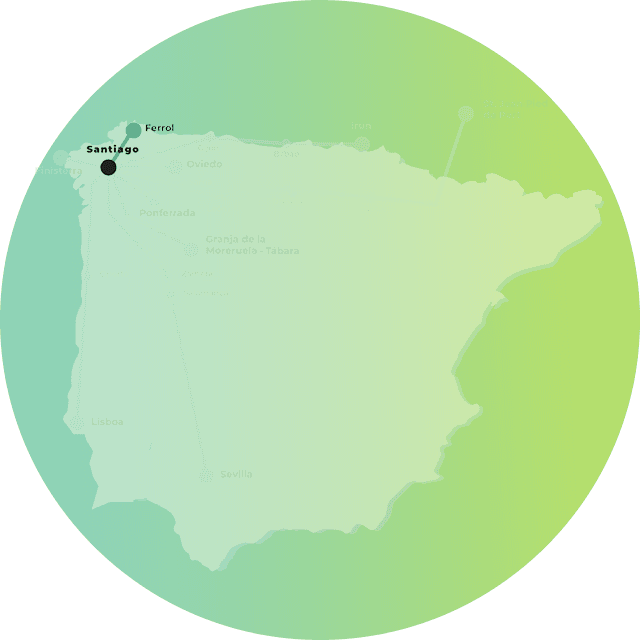
English Way
From Ferrol to Santiago de Compostela. Delve into the culture of villages of great military, naval and historical importance. 5 Etapas | 125 km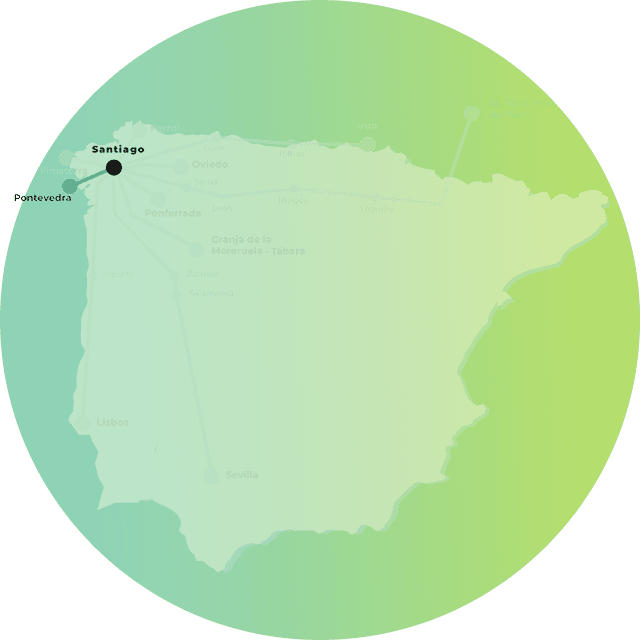
Father Sarmiento Way
The Father Sarmiento Way links Pontevedra to Santiago de Compostela, offering a scenic journey through beautiful landscapes. 6 stages | 142 km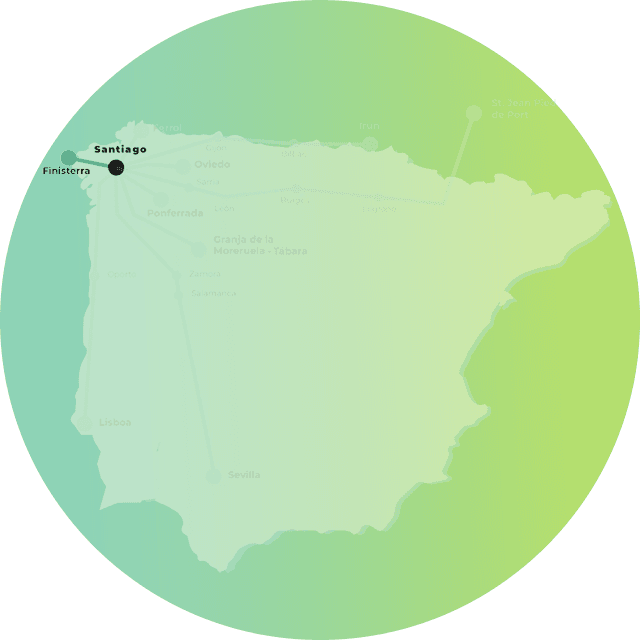
Finisterre and Muxía Way
From Santiago de Compostela to Muxía. A mystical and spiritual journey to the ends of the Earth 5 stages | 120 km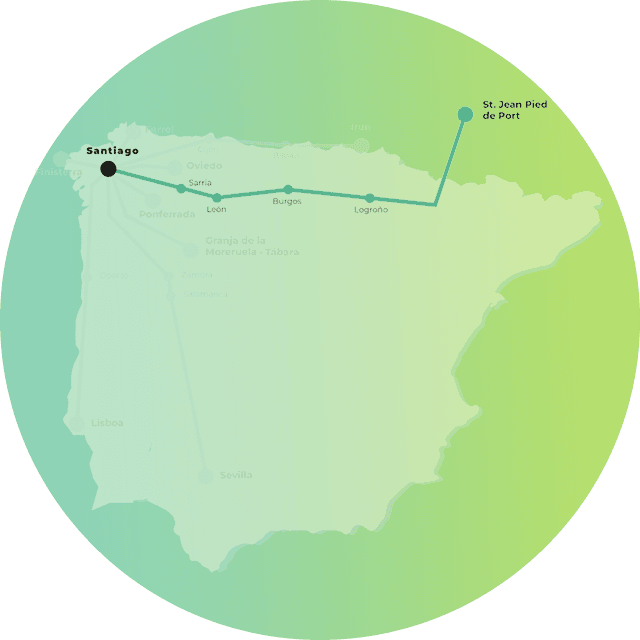
French Way
From Saint-Jean-Pied-de-Port to Santiago, trace Charlemagne’s path through the Pyrenees and trek 800 km on the French Way. 33 stages | 768 km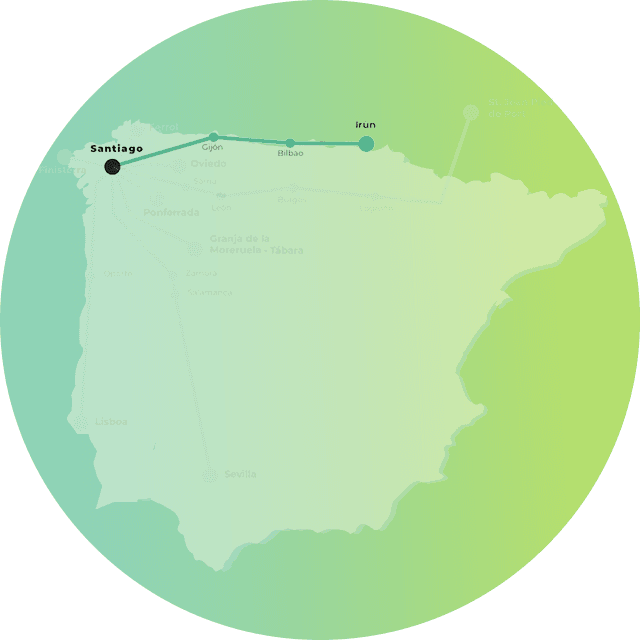
Northern Way
From Santiago de Compostela to Muxía. An unforgettable experience with breathtaking scenery 34 Stages | 820 km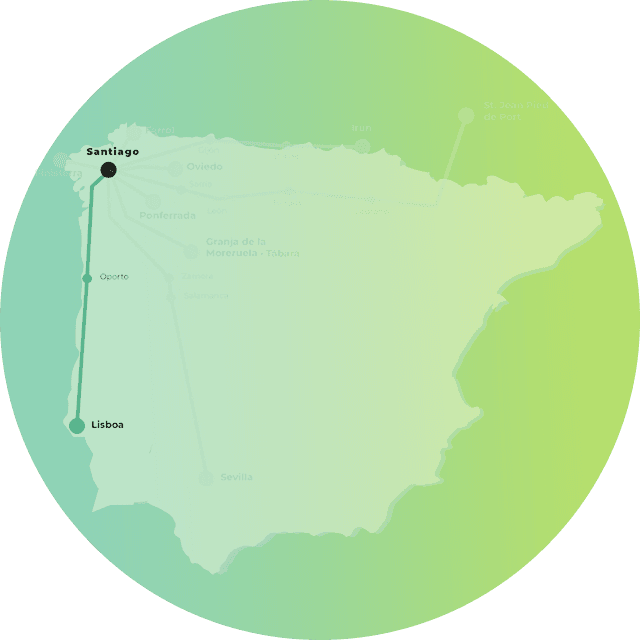
Portuguese Way
Starts in Lisbon and leads to Santiago de Compostela, offering a scenic journey through charming towns, coastal views, and culture. 27 stages | 620 km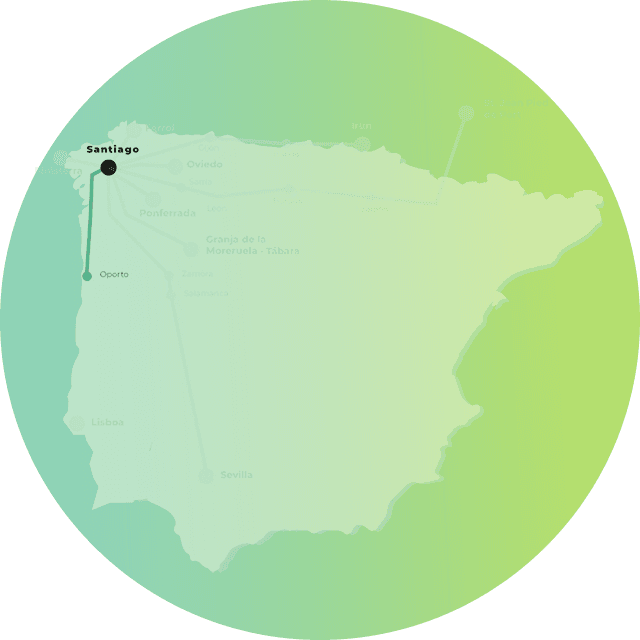
Portuguese Way along the coast
From Oporto to Santiago de Compostela. Total 194 km - 8 stages 8 Stages | 194 km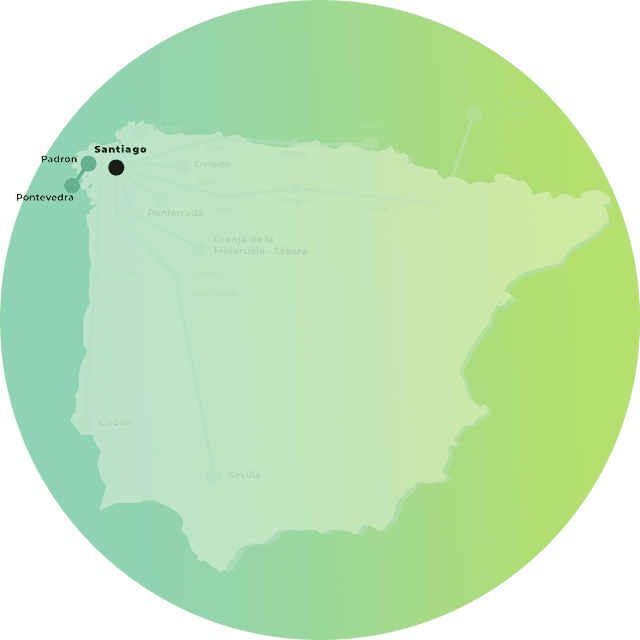
Portuguese Way: spiritual variant
From Pontevedra to Padrón. Total 81 km - 3 stages 3 stages | 81 km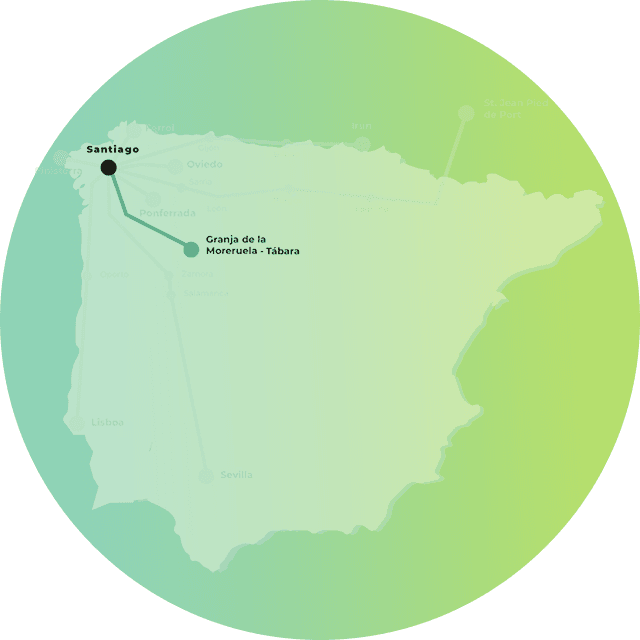
Sanabrian Way
From Granja de Moreruela to Santiago de Compostela. Total 365 km - 13 stages 13 stages | 365 km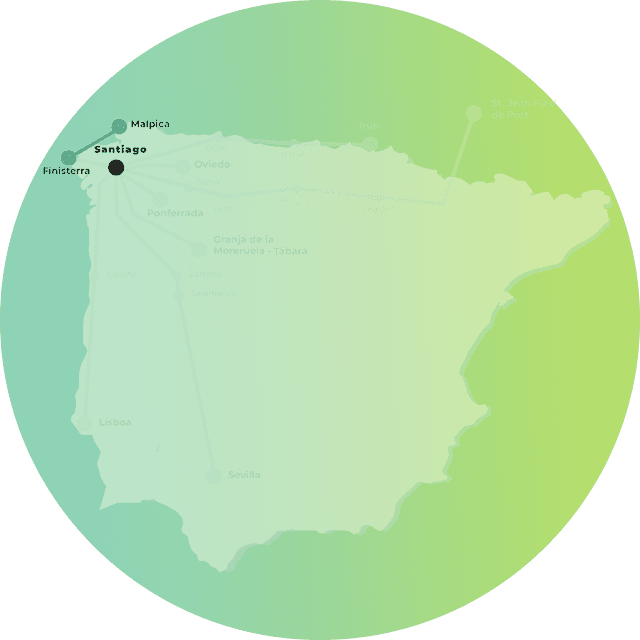
Way of the Lighthouses
From Malpica to Finisterre. A 200-kilometer journey along the coast and through the wildest of nature 8 stages | 195 km